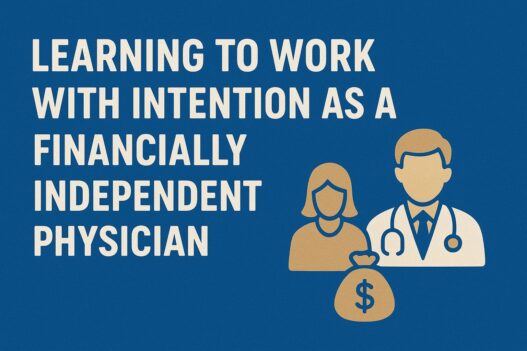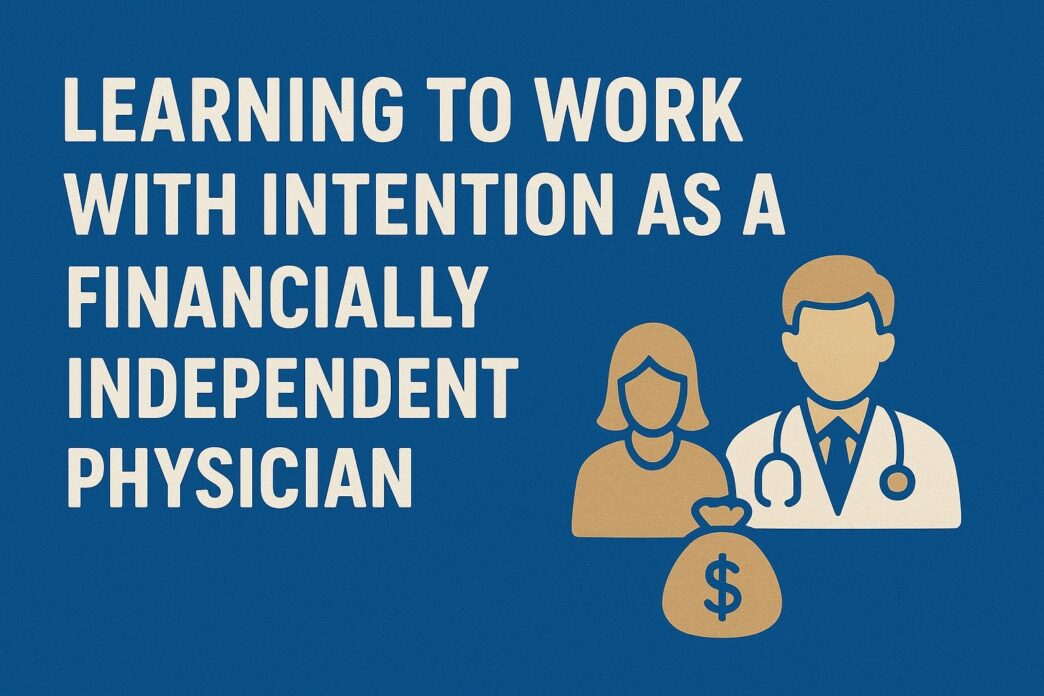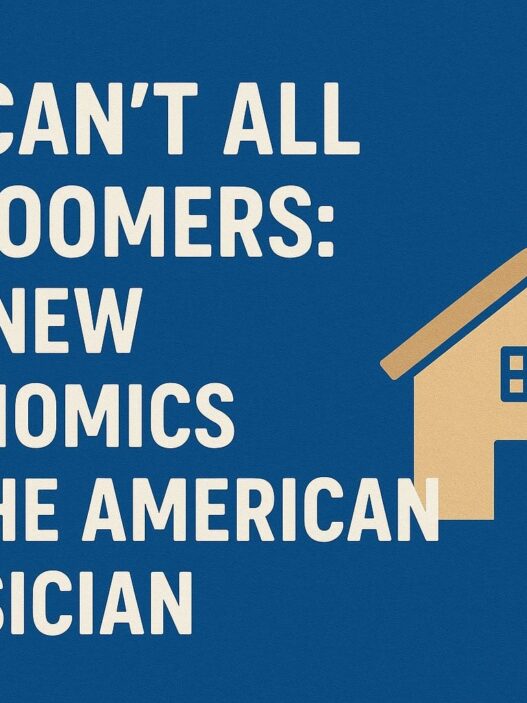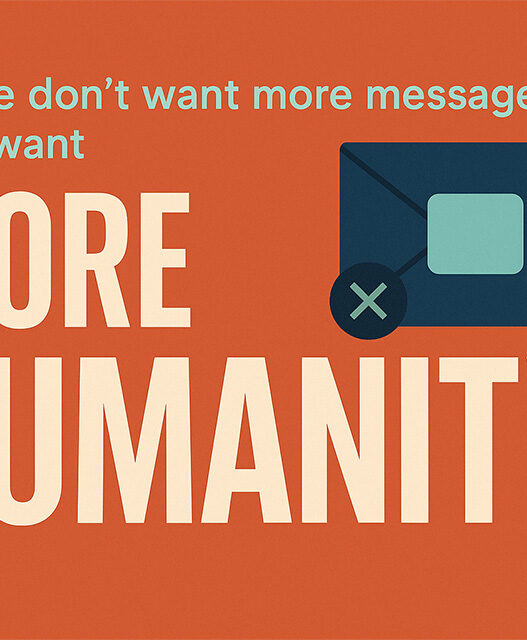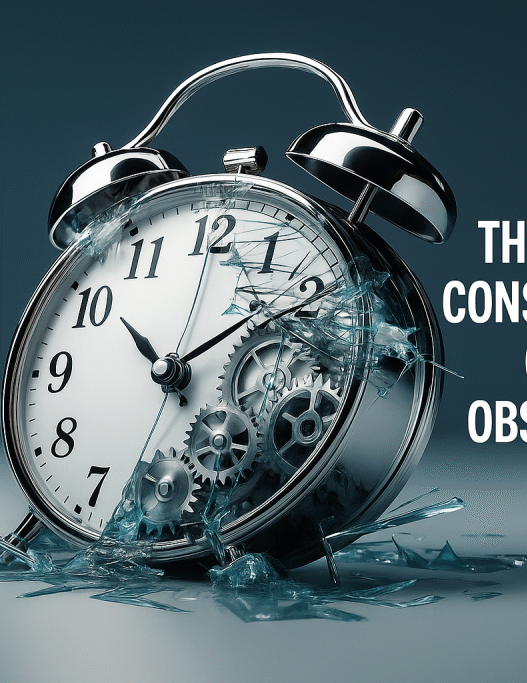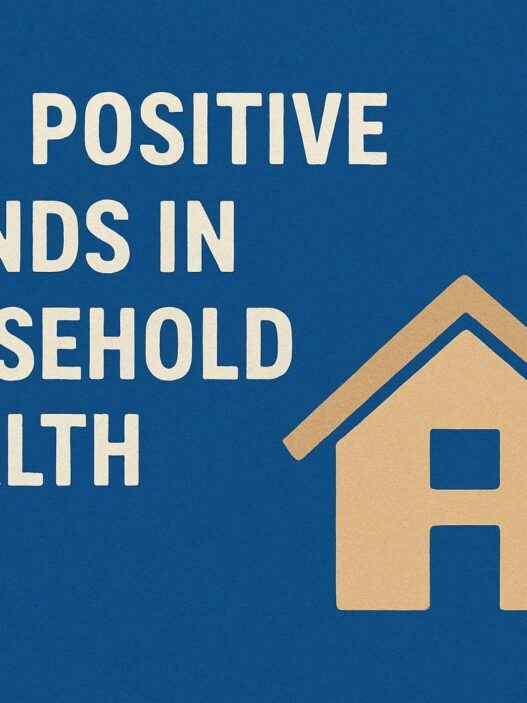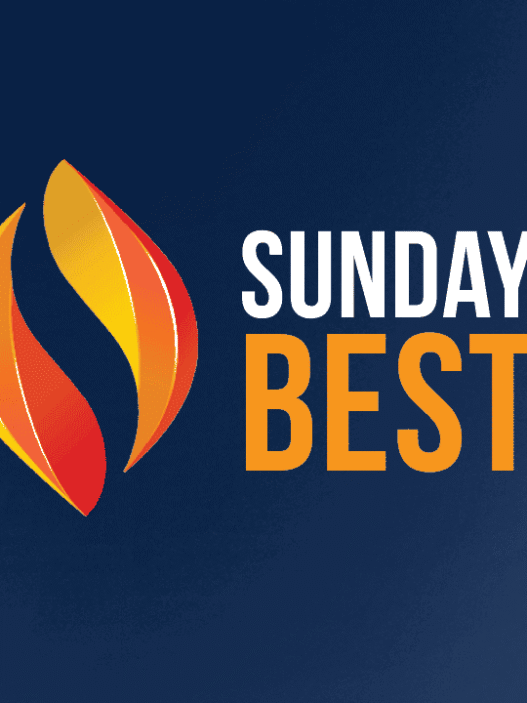The most dangerous word in medicine isn't malpractice, nor is it burnout. It's autopilot.
Thousands of physicians spend decades in a blur of call schedules, electronic health records, and the unrelenting march of patient charts.
The momentum of training carries into practice, and before long, work starts to feel less and less like a calling. Physicians earn incomes that put them in the top 5% of Americans, yet many of us feel trapped. Trapped by student loans, lifestyle costs, and the gnawing suspicion that we're running hard but not running free.
Financial independence flips that script. It reframes money not as an end goal, but as a tool for reclaiming intentionality. A tool that affords us the ability to choose when, where, and how we work.
The ultimate question, then, is not whether physicians can afford to pursue financial independence. It's whether they'll learn to work with intention once they have it.
Why Autonomy Matters More Than Income
The Medscape Physician Burnout & Depression Report 2025 found that 53% of doctors report symptoms of burnout, with emergency medicine, internal medicine, and family medicine leading the pack.
Long hours and administrative bloat are part of the story, but money is a sly accomplice too. Physicians with heavy student loan burdens or bloated lifestyles often feel chained to jobs that don't fit their values.
Dr. Cobin Soelberg, anesthesiologist and founder of Financial Residency, puts it plainly, “You can have anything you want, you just can't have everything you want.”
For Soelberg, attaining financial independence wasn't for the sake of stopping work altogether. It was to gain the freedom to say yes or no with intention.
That meant traveling to Spain with his newborn without guilt, or scaling back shifts without panic over a thinner paycheck. The aim was to maximize autonomy.
This reframing is crucial for physicians.
An income of $300,000+ sounds enviable until you realize it's spent before it arrives, what with mortgage, student loans, childcare, private schooling, vacations, and retirement contributions consuming it quickly.
Without a deliberate framework, physicians end up wealth-rich but time-poor.
The Math Physicians Need to Do
The average new physician starts practice with $216,659 in medical school debt.
For many, that number is even higher.
Soelberg compares debt to cancer because of its quality of metastasizing silently and stealing future options. Every dollar funneled into interest payments is a dollar not compounding in investments.
Consider two physicians, both earning $300,000 annually.
Physician A delays investing for 10 years while focusing solely on loans. Physician B, on the other hand, starts investing $2,000 a month from the very beginning while also paying down debt.
At a conservative 5% return, Physician B ends up with ~$300,000 more after 30 years. That's that compounding magic we love talking about, and it's nothing if not a king's ransom.
To be clear, I'm not saying that we should ignore repaying debt entirely. I'm just advocating for balance. There's no one “correct” way to achieve financial independence. But they all start with aligning the numbers with your personal values.
The knowing–doing gap, the gulf between what we know intellectually and what we implement in real life, is unfortunately where most of us stumble.
To help you make an informed decision, here's a piece about 5 Reasons to Pay Off Debt (Instead of Investing).
A Framework for Physician Finance
While individual choices differ, the American Academy of Family Physicians (AAFP) offers a roadmap for financial literacy that applies even across specialties. Their framework rests on the following points:
Financial literacy: Mastering the basics of budgeting, credit, and interest
Every financial journey starts with fluency in the fundamentals. Budgeting shows you where your dollars actually go. Credit determines not only whether you'll be approved for loans but also how much those loans will cost.
That same interest that is destructive when tied to student debt, can be a boon when harnessed in long-term investments. Understanding these mechanics is important because without that literacy, every other decision is built on shaky ground.
Cash flow and budgeting: Spending consciously rather than reactively
A physician's income trajectory is unique. It involves years of delayed gratification followed by a sudden surge in earnings. Managing cash flow in this stage requires awareness.
Conscious spending means making deliberate choices, matching expenses with long-term priorities instead of letting habits or lifestyle creep dictate the flow. Higher income brings opportunity, but only when it's directed with intention.
Insurance planning: Protecting against catastrophic risk
One injury, lawsuit, or diagnosis can derail decades of training and future earnings. Disability coverage safeguards your ability to practice, malpractice insurance shields your career, and life insurance protects your family.
Well-structured coverage ensures that an unexpected blow doesn't undo everything you've worked for.
Debt management: Strategically attacking student loans and consumer debt.
For most new physicians, six-figure debt is the backdrop to their first attending contract. Managing it requires a robust strategy, which often involves choosing between income-driven repayment, forgiveness programs, refinancing, or a balanced plan that leaves room for investing.
Credit card balances and high-interest loans deserve immediate attention because they eat into wealth faster than almost anything else. A thoughtful repayment plan keeps long-term options open.
Retirement planning: Maximizing tax-advantaged accounts.
The earlier contributions begin, the less effort is required later. Employer-sponsored plans, Roth and traditional IRAs, and health savings accounts all accelerate compounding, especially when funded consistently.
For high earners, tools like the backdoor Roth turn quirks in the tax code into long-term advantages. Retirement planning works best when built into daily financial routines rather than left for future-you to muddle through.
Investments: Focusing on long-term, diversified, low-cost vehicles.
Successful investing doesn't depend on constant tinkering— or at least it shouldn't. Broad diversification across low-cost index funds allows portfolios to grow steadily over decades.
For physicians with limited free time, a simple evidence-based approach reduces stress while giving compounding the space to work.
Financial advisors: Knowing when to delegate and when to steer clear.
Physicians are attractive targets for commission-driven advisors. The best protection lies in understanding enough to recognize incentives and ask the right questions.
A fiduciary working transparently can provide valuable guidance, while a conflicted advisor can quietly drain wealth for years. Even when you delegate, staying informed keeps control firmly in your hands.
Estate planning: Building a legacy beyond one's own career.
Estate planning may be uncomfortable to confront, but it prevents confusion for loved ones and directs your hard-earned assets with purpose.
Wills, powers of attorney, and trusts ensure financial stability outlasts your working years. With a plan in place, the results of a demanding career can extend into a true legacy.
On the surface, these points aren't earth-shattering by any means. But paired with intentionality, they can lead you towards autonomy. A doctor who masters budgeting can step back from overtime shifts.
The one who insures adequately can take entrepreneurial risks without fear of catastrophe. And the one who invests early can practice medicine because they want to, not because they have to.
Learn more about How Physicians Think About Investing
How to Make Real Trade-offs
In the chat with Soelberg, Dr. Jen Barna shares the “Betty Lou” exercise. We learn a new way to plan. It involves envisioning a 75-year-old version of ourselves and asking whether today's financial decisions will make them grateful or resentful.
Would your Betty Lou thank you for buying the $1.2 million house with the doctor mortgage, or for investing in an index fund that doubled three times by retirement?
These trade-offs appear quite stealthily in our daily choices. Do you finance a $90,000 car in residency, or drive a $15,000 one and invest the difference?
Do you accept every locums shift to fatten your savings rate, or skip a few to be present at home?
Do you stay in a toxic practice for the paycheck, or take a pay cut to regain joy in medicine?
Austerity for its own sake doesn't make sense: Every “yes” to consumption is a “no” to compounding or time freedom later.
The financial path of a physician moves through distinct stages, each with its own trade-offs and hidden traps.
During medical school and residency, you're pretty much in survival mode. And luxury could not be further from your mind.
The smartest move at this stage is to keep debt from snowballing. Living lean a little longer, even when peers in other professions are spending freely, can translate into decades of future flexibility. Every unnecessary dollar borrowed here multiplies into a heavy burden later.
Moving on to early attending years. This is the most precarious stage, not because of low income but because of too much of it.
The leap from a resident's $60,000 to a new attending's $300,000 creates an almost irresistible pull toward lifestyle inflation. The physicians who resist it, by funneling 20% to 30% of their earnings straight into savings and investments, build independence at a pace their peers can only envy.
At mid-career, compounding has taken root. The foundation built in the early years creates options. This is the point where choices become philosophical as much as financial.
Should you continue chasing maximum income at the cost of time, or scale back and allow accumulated wealth to carry more of the load? The math supports either path, but the question changes to what kind of life feels worth the effort.
Finally, during late career years, money stops being the primary driver.
At this stage, financial independence grants permission to reinvent work itself.
Some physicians walk away entirely. Others lean into consulting, teaching, or volunteering, finding new meaning outside the grind of clinical practice. The emphasis moves from accumulation to fulfillment and from earning more to shaping a legacy that lasts.
Every stage forces a physician to engage both sides of the ledger. The hard arithmetic of debt, savings, and investment, and the softer but equally vital inquiry “what kind of life is this money buying?”
Beyond the Numbers
Financial independence is often sold as a numerical puzzle. Hit your “number” (usually 25x your annual expenses) and you're free. But for physicians, it's more complicated.
Medicine isn't a job you leave at 5 p.m. It's an identity built over a decade of training. Walking away can feel like erasing yourself.
That's why so many doctors achieve financial independence but continue to work, because for them, purpose and identity matter as much as money.
Burnout, however, is an inescapable curse of this profession. Medscape's 2025 survey found that 47% of physicians report burnout, with women being disproportionately affected. And the consequences run deeper than dissatisfaction.
Also, according to Medscape, physicians face a suicide risk 1.4 to 2.3 times higher than the general population, with burnout and loss of autonomy among the cited factors.
These statistics are reminders that, however indirectly, financial illiteracy can cost years of joy, health, and in some cases, lives.
Physician burnout is an inescapable curse of this profession. And the truth is you just can't heal others if you yourself are running on empty.
For some, independence means quitting medicine altogether. For others, it means working part-time, teaching, or pivoting into non-clinical roles. The common denominator is not the decision to stop, but the freedom of choice.
Working With Intention
So, how does a financially independent physician actually work with intention? It comes down to practices that turn money into meaning. The first is to define your “enough”, not what peers spend, not what advisors suggest, but the amount that funds your life vision. Because without a clear finish line, you'll just keep running and running with no end in sight.
The second is to design your work around values. Independence gives you the option to choose, but it also demands clarity.
Time with family, global health service, entrepreneurship, or teaching, whatever path you choose, know that it will require courage to prioritize what matters most to you.
Lastly, you've got to revisit ‘the plan' regularly. Intentionality isn't static. Children grow, markets shift, and health changes. The physician who reevaluates annually avoids drifting back onto autopilot.
At its core, financial independence is, and has always been about reclaiming autonomy in a profession notorious for draining it. In Soelberg's case, his trip to Spain with his newborn was proof that a physician could align money with meaning.
What would it mean to you? Isn't wanting to experience joy without fearing financial collapse something we all wish for?
Doctors don't need another lecture on budgeting. You've heard it all, time and again. But I do think a reminder doesn't hurt. The reminder that every dollar saved, invested, or spent is a vote for the kind of life you will be living one day.
Work with intention, and financial independence becomes a reframe through which medicine switches from being an obligation back into a calling.
What's one financial myth you carried with you through residency that still creeps into your decisions today?
Maybe it was the belief that your attending salary would solve everything, or that you couldn't possibly invest while paying off debt. Share your thoughts so we can help the next generation of doctors to make informed decisions.
In case you missed it: Inflation-Proof Investing: How Physicians Can Build Wealth with Real Estate
Frequently Asked Questions
What is “financial independence” for a physician? Is there a magic number?
Financial independence typically means having enough assets to cover your lifestyle without active clinical income. Many use a benchmark like 25× annual expenses, but that's just a rule of thumb — your “enough” is a more personal decision.
If my student-loan interest is high, should I invest or pay it off first?
Use a hybrid strategy. Pay down high-interest debt aggressively, but don't wait 10 years to begin investing. Even modest early contributions get compounding on your side. The precise split depends on your interest rate, tax situation, and comfort level.
How much should I be saving or investing as a new attending?
Aim for at least 20–30% of your gross income, if you can swing it. Even though that may feel aggressive early on, resist the urge to inflate your lifestyle too soon.
When should I hire a financial advisor, and what should I look for?
Consider hiring one when you begin getting offers, negotiating contracts, or thinking about big financial moves. Look for a fiduciary (someone legally obligated to act in your best interest), a transparent fee structure, and someone who gets doctors.
How often should I revisit my plan?
At least annually. But do check-ins when major life events like marriage, kids, job changes, or health issues happen. Those shifts often trigger a drift back toward autopilot.
Will I always have to work, even if I hit financial independence?
Many physicians do continue working, but only intentionally and on their terms. Some reduce hours, shift to teaching, switch to non-clinical roles, or take sabbaticals. The point is choice, not obligation.








